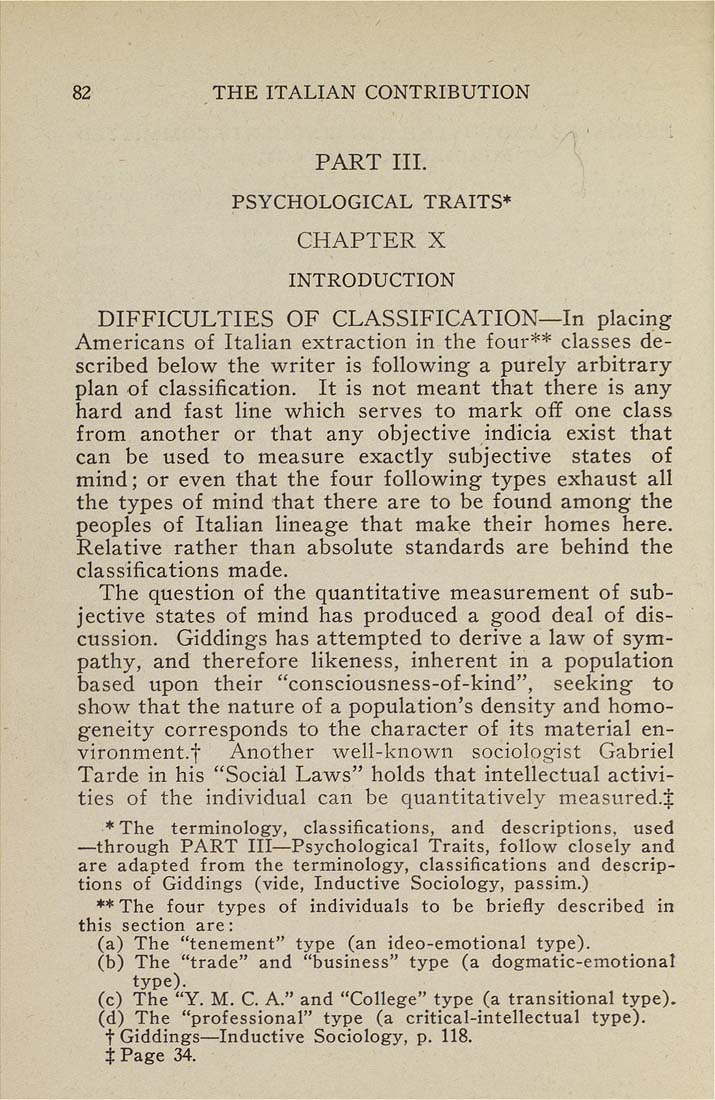82 THE ITALIAN CONTRIBUTION
PART III.
PSYCHOLOGICAL TRAITS*
CHAPTER X
INTRODUCTION
DIFFICULTIES OF CLASSIFICATION—In placing
Americans of Italian extraction in the four** classes de¬
scribed below the writer is following a purely arbitrary
plan of classification. It is not meant that there is any
hard and fast line which serves to mark off one class
from another or that any objective indicia exist that
can be used to measure exactly subjective states of
mind; or even that the four following types exhaust all
the types of mind that there are to be found among the
peoples of Italian lineage that make their homes here.
Relative rather than absolute standards are behind the
classifications made.
The question of the quantitative measurement of sub¬
jective states of mind has produced a good deal of dis¬
cussion. Giddings has attempted to derive a law of sym¬
pathy, and therefore likeness, inherent in a population
based upon their "consciousness-of-kind", seeking to
show that the nature of a population's density and homo¬
geneity corresponds to the character of its material en¬
vironment.f Another well-known sociologist Gabriel
Tarde in his "Social Laws" holds that intellectual activi¬
ties of the individual can be quantitatively measured.^
*The terminology, classifications, and descriptions, used
—through PART III—Psychological Traits, follow closely and
are adapted from the terminology, classifications and descrip¬
tions of Giddings (vide. Inductive Sociology, passim.)
** The four types of individuals to be briefly described in
this section are:
(a) The "tenement" type (an ideo-emotional type).
(b) The "trade" and "business" type (a dogmatic-emotional
type).
(c) The "Y. M. C. A." and "College" type (a transitional type).
(d) The "professional" type (a critical-intellectual type),
t Giddings—Inductive Sociology, p. 118.
jPage 34.
|








